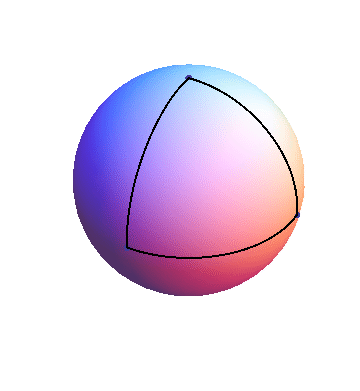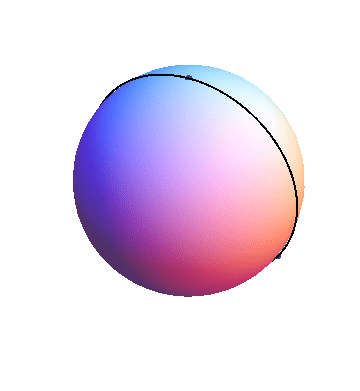Some issues of grammar and usage come up fairly regularly in students’ writing. These are a few I’ve noticed in past semesters. I’ll illustrate them with (anonymous) excerpts from past student essays.
This is definitely not meant to be a complete list. It’s just issues that have struck me particularly often.
The comma splice.
This is by far the most common grammar or punctuation error in my students’ writing.
A comma splice is the joining together of two complete clauses by just a comma. For example,
Ptolemy has made it so Earth is not in the exact center of his model, it is displaced slightly.
The part before the comma is a grammatically complete sentence, and so is the second part. Joining them together with just a comma is an error.
There are several ways to fix a comma splice:
- Just make the two halves separate sentences.
- If you want to emphasize that they’re closely related, you can separate them by a semicolon (;) or maybe a colon (:). The semicolon is more common; the colon usually suggests that the second half explains or provides an example of whatever’s in the first half.
- Put a conjunction (and, but, etc.) in between the two clauses.
There’s an important addendum to the last rule: “however” is not a conjunction, so it doesn’t fix a comma splice. For example:
All the above theories are strong candidates for the explanation of how we observe the heavens, however, only one of them soundly holds the upper-hand beyond the other two and that is the Tychonic model.
This contains a comma splice error. Replacing the comma after “heavens” with a semicolon solves the problem. (The comma after “however” is correct and necessary.)
The subjunctive.
There was a popular song in the 1990s called “What if God was one of us?” This song drove grammar nerds crazy, because it should be “What if God were one of us?” The old musical Fiddler on the Roof got this right, in the name of the song “If I were a rich man.”
The quick-and-dirty rule is this: if you write an “if” clause, and the thing in that clause is something known to be false, then use “were” instead of “was”. In this situation, “were” is the subjunctive form of “was”.
For example:
If the earth was really rotating once a day, we would have been hurled into the universe by now because of the speed.
Change “was” to “were” in this sentence.
(In hindsight, this is a poor example, because the Earth actually does rotate once per day! But this essay was written from the point of view of an anti-Copernican, who believed it was false.)
Beg the question.
An example of how this expression is often used:
This begs the question, can a theory be considered correct if it simply cannot be proven wrong?
The meaning here is clear: “begs the question” is being used to mean something like “raises the question” or “requires us to examine the question.”
The problem is that, traditionally, “beg the question” meant something quite different. It referred to a particular form of logical error, in which a person making an argument assumed the very thing he or she was trying to prove. In other words, accusing someone of “begging the question” means accusing them of circular reasoning.
Idiomatic expressions change over time. Nowadays, the original meaning of “beg the question” is quite uncommon. The phrase is much more commonly used in the sense that the student above meant. But at the moment, traditionalists regard the more modern meaning as “incorrect.”
You might think the traditionalists are being stupid to insist on an archaic meaning. You might say that since everybody instantly understands the intended meaning, there’s no problem. Between you and me, I might even agree with you. But some significant fraction of your readers, particularly if you’re writing papers for college professors, will insist that the newer meaning of this expression is “wrong” and will judge you negatively for it.
This puts “beg the question” in a strange position. If you use it in the old-fashioned, correct sense, lots of people won’t understand you. If you use it in the more current sense, traditionalists will sneer at you. There’s only one solution: avoid the phrase entirely. Fortunately, this isn’t hard to do. Often “raises the question” conveys the meaning you want.
As Bryan Garner put it in his very good book A Dictionary of Modern American Usage,
When a word undergoes a marked change from one use to another . . . it’s likely to be the subject of dispute. Some people (Group 1) insist on the traditional use; others (Group 2) embrace the new use. . . . Any use of [the word] is likely to distract some readers. The new use seems illiterate to Group 1; the old use seems odd to Group 2. The word has become “skunked.”
Beginning a sentence with “So.”
An example:
So when reflecting upon the theories of the best astronomical minds of this era, one cannot help but be swayed by the system that takes the best of each theory.
This is more a matter of taste than of correctness, but I recommend that you not start sentences with “So” in formal writing. Traditionally, “so” is a conjunction, so it should join two clauses together (as it just did in this sentence). I won’t say that using it as an adverb to start a sentence is wrong, but it sounds chatty and informal to me. If you’re going for a traditional, formal tone in your writing, I recommend avoiding it. If you’re deliberately trying to sound conversational, that’s a different matter.
In general, use the word “that” even when it’s optional.
Compare these two sentences:
- If the Earth were in motion as Copernicus claims, the Bible would read the Earth stood still.
- If the Earth were in motion as Copernicus claims, the Bible would read that the Earth stood still.
Both are 100% grammatically correct, but the second one’s better, for a subtle reason. In the first sentence, when you get to the words “read the Earth,” you have a momentary tendency to misinterpret it: it looks, just for an instant, as if “Earth” were a direct object. That is, you briefly interpret “read the Earth” in the same way as you would interpret “read the book.” When you get to the rest of the sentence, the confusion is cleared up, but that slight hiccup disrupts your attention just a bit. By including the word “that,” even though it’s not grammatically necessary, the author keeps the hiccup from happening.
This advice goes against one of the most common writing maxims, namely to be concise and omit needless words. But I still think you’re usually better off including “that” in situations like this. The best thing to do is to read the sentence aloud both ways and decide which one sounds better.
Let me repeat that this is not a matter of correctness: both versions of the sentence above is correct. All I ask you to do is consider whether one version or the other is better at helping the reader understand what you mean.
The passive voice.
Lots of people will tell you to avoid writing sentences in the passive voice. For instance, instead of saying
The issue of whether light travels instantaneously or at a finite speed has been debated by many great minds.
say
Many great minds have debated the issue of whether light travels instantaneously or at a finite speed.
For those who don’t remember their grammar terminology, in an active sentence, the subject of the sentence is the person or thing performing the action in the sentence. In the above examples, the action is debating, and the things doing the debating are the minds. The second version puts the actor right up front as the subject of the sentence. That’s active, and the conventional wisdom is that active is better.
Personally, I think that the blanket rule to avoid the passive is often overstated. (I rambled on about this at some length in another post.) There are lots of times when the passive voice is just what you want. But without a doubt there are many cases, including the above sentence, in which the passive voice sounds bad. My advice: whenever you write a passive sentence, try out what it sounds like if you make it active. Read both versions aloud, and see which one sounds better. More often than not, you’ll decide to make it active.


